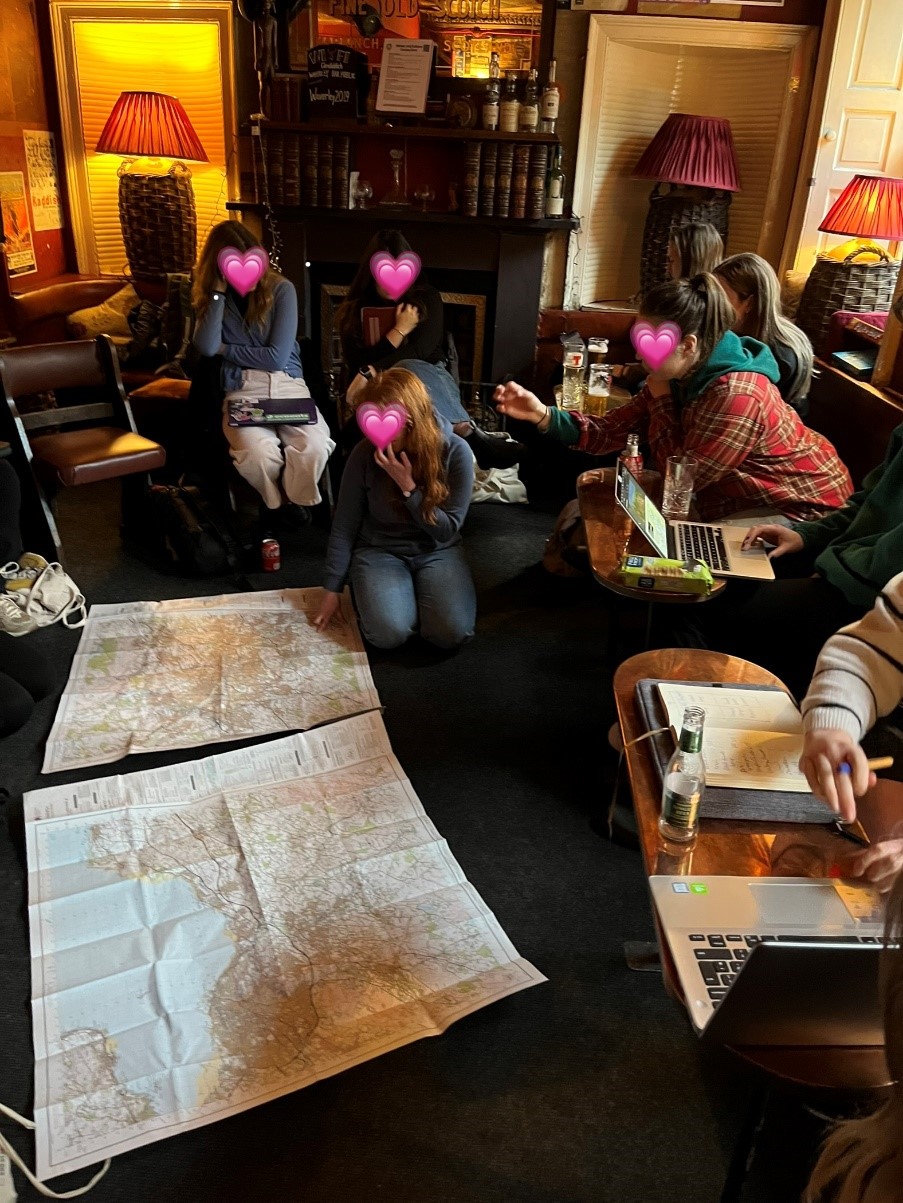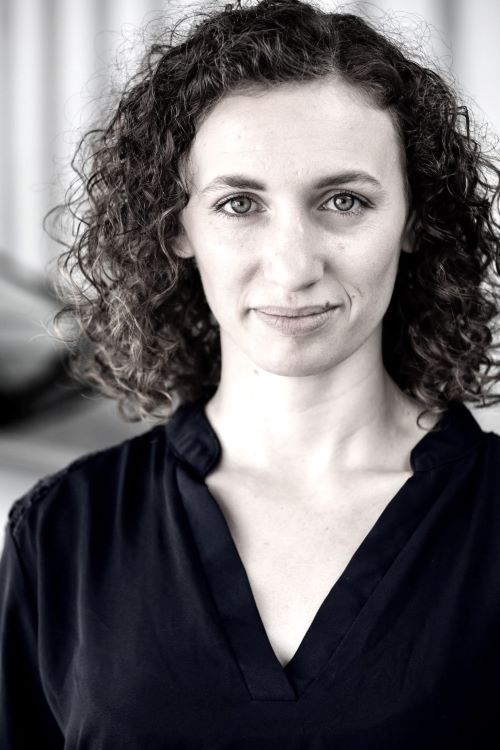
In this post, Julia Lisa, a graduate of the MSc in Environmental Sustainability, tells us how participating in the workshop that investigated the “who”, “what”, “where”, and “how” of learning and teaching at the School of GeoSciences inspired her to lead her own research project on undergraduate students’ participation in the University’s Nature Positive Goals. This post belongs to the Learning and Teaching Enhancement theme: ‘Learning how others learn’↗️.
Should students have a role in deciding what and how subjects are taught? Don’t students come to university to learn from experts in their fields? How can students add value or benefit from participating in curriculum design? These are questions that were raised in a workshop exploring student co-design of an undergraduate course. Within this workshop at The University of Edinburgh in May 2023, we investigated the “who”, “what”, “where”, and “how” of learning and teaching for GeoSciences. The facilitating researchers, Cecile Menard and Minkyung Kwon, cultivated a collaborative environment between students and staff to answer these questions.
What does learning look like to you? (Yes, you, dear reader). Before the workshop, we were asked to find a photo that illustrated the answer to that question for ourselves. Maybe, take a moment to think of an image that represents what learning looks like to you (yes, you). As a student participant, I chose a photo (image 1) from one of my master’s modules. To me, it represents student participation and student-led learning. The story of this photo is that the wonderful lecturers on this course, ‘Participation in Policy and Planning’, offered us, students, choices and the final say in how we wanted to conduct classes that fell on strike days. As a group, we discussed our academic goals and our ethics. Ultimately, we chose to do our best to accommodate all our varied interests and needs. This photo also represents the student-led meetings that we had to conduct weekly to complete a massive research project. This hands-on experiential learning was my ideal learning style as it allowed us to gain skills in applied ethics, problem-solving, and leadership in addition to the materials covered in taught lectures.

The types of questions posed at the start of this blog, as well as the experiences of student participation represented in the photo, inspired my own dissertation research, in which I explored undergraduate student participation in the University’s Nature Positive Goals. (The goals support the official pledge that The University of Edinburgh and others have made to halt, prevent and reverse nature loss by addressing their own impacts and restoring ecosystems harmed by their activities). My dissertation was wittily titled (if I do say so myself): “The Nature of Participation; Exploring Participation in ‘Nature Positive Universities Goals’; Students as Stakeholders” (1). To capture accurate representations of undergraduate student perceptions, interviews were filmed to create a documentary (as you can tell, I think the student-voice is important. A link to the film will be available soon).
So what did the students who participated in this research conducted by their peer (you guessed it, me) identify as being the benefits of and barriers to student participation in initiatives led by the university? Barriers included lack of trust in the University administration, concerns about mental health and well-being, as well as a desire for a sense of belonging. Potential benefits included enhanced learning, gaining new perspectives, increased feelings of belonging, and developing personal agency leading to better mental health and well-being. Students also suggested that participation could help improve student satisfaction, thus leading to a better reputation for the University. As one student put it, “You can’t all neatly tie it in a bow and say done, but you can conjoin the dots.”
A challenge with student participation is that not all ideas proposed by students may be feasible. However, as others found before me (2), nurturing a participatory dialogue can promote understanding and transparency. The students who participated in my research also thought transparency was important, with one stating: “I think students want transparency from a university, so the ‘why’ [i.e. the reasons why decisions are made] should be very clear.” I found that being transparent about the “why” could help build trust in the university as well as help foster feelings of belonging and community – feelings students expressed a desire for.
Findings from my research on student participation resonated when I turned into a student participant for the co-design workshop, mentioned above. During discussions with the other participating students, there were conflicting perspectives about learning styles that came out of the photo-sharing exercise mentioned above. This led to new understandings of how different brains work and learn, and what resonated with some students or hindered others. Having that conversation with each other and the facilitators helped us to create understanding and shape our workshop, creating a collaborative environment that we all felt a part of. During the exercises for which we were asked to work together to design the structure of an interdisciplinary Geosciences course, compromises were made in trying to accommodate everyone’s needs and preferences.
A question that was not initially asked in the workshop or the start of this post, is the question “why?”. As evidenced by my research and as it unfolded organically in the workshop, having an open discussion about the “why” (the reasons for individuals’ perspectives and preferences and the reasons for administrative requirements) enabled everyone to be part of the decisions instead of just being dictated to. This dialogue prevented potential resentment, mistrust, or negative effects on mental health from struggling in silence. In conclusion, our collaborative dialogues explaining the “why” were beneficial for creating understanding and acceptance. (Did we just solve all the world’s problems with this brilliant and obvious statement?) After my experience and reflections from this workshop, I am keen to read the paper that the facilitators, Cecile and Minkyung, are preparing. From my own research, I certainly see wonderful benefits from continuing to explore student participation and involvement in decision-making.
(1) Lisa J. The Nature of Participation; Exploring Participation in ‘Nature Positive Universities Goals’; Students as Stakeholders [Masters]. [Edinburgh]: University of Edinburgh; 2023.
(2) Cumming G, Norwood C. The Community Voice Method: Using participatory research and filmmaking to foster dialog about changing landscapes. Landsc Urban Plan. 2012
 Julia Lisa
Julia Lisa
Julia Lisa received her MSc in Environmental Sustainability from The University of Edinburgh. She conducted a 2023 Living Labs research project with the Department of Social Responsibility and Sustainability at The University of Edinburgh on Student participation in Nature Positive Universities’ goals. She also worked on Scotland’s National Parks community participation research for Scottish Government. With her background in film/television/theatre production, she endeavours to incorporate innovative media into sustainability initiatives.


